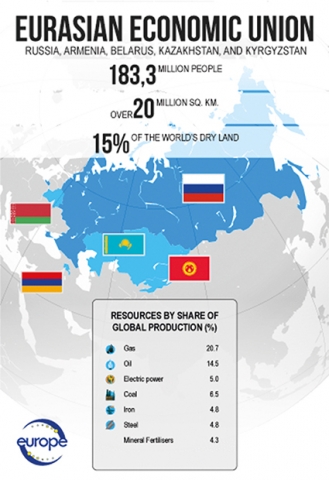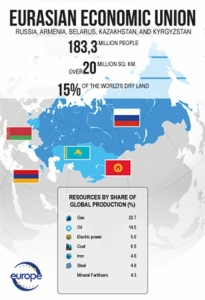Creating a Common Natural Gas Market for the Eurasian Economic Union
The participating countries of the Eurasian Economic Union are implementing an ambitious project to create a common market for natural gas by the EAEC by 2025. As of the end of 2016, the basic conditions for the future market were agreed and the concept for its creation adopted. The next stage of the "road map" for the formation of the regulatory and legal framework for gas integration will be the Program of Practical Actions for the implementation of the concept, which should be approved by the end of 2018.
The formation of a common natural gas market in the EAEC will be successful if its participants can overcome the institutional heterogeneity of the current models of national natural gas markets and will be able by consensus to design the Target Model of the future common natural gas market.
The national gas markets of the EAEC countries, on the basis of which a common market should be formed, are at different stages of evolutionary development and differ in the variety of functional models. The gas market of Belarus functions within the framework of the public administration and planning system and in Kazakhstan the "main buyer" model is realized, characteristic for monopolistic types of market structures. In Russia, the market corresponds to the characteristics of monopoly competition, where, along with the dominant player, independent organizations operate. The markets of Armenia and Kyrgyzstan are at the initial stage of formation and have all the signs of a monopoly structure.
All the countries of the Unified Energy System unite a high degree of state intervention in the functioning of markets, and sometimes see the direct involvement of the state in economic activities. Competition is poorly developed, and is often absent. There are high barriers for new players to enter the market. Regulation of gas prices is based on various methodologies for their calculation, price levels are largely dependent on the socio-economic and political goals pursued by national governments. As a consequence, prices are subsidized.
Considering the differences in the starting conditions of the national gas markets of the EAEC member states, the two-stage format of the movement towards the common market seems to be the most optimal. Ensuring the institutional homogeneity of models of national markets on agreed key criteria should be the content of the first stage. In the future, the main focus should be shifted to the formation of institutions of supranational level that ensure coordination and regulation of the common gas market at its functional stage.
The target model of the future common natural gas market of the EAEC should contain answers to key questions regarding the distribution of strategic-regulatory competence between the EAGE authorities, which includes the structure of the common market, the availability of competition, the status of participants, the mechanisms of trade, the contract scheme, pricing principles and calculation of tariffs, regulation of access to infrastructures, markets and consumers, the structure of the external integration circuit and relations with third countries, regulate problems of gas exports to third countries which now are formally made out of the brackets of the EAEC integration agenda.
Today, the EAEC states have all the initial prerequisites for implementing deep integration processes in the gas sector. These are a significant resource potential, the presence of a developed gas transport infrastructure, modern technologies and qualified personnel. The historical experience of the functioning of the gas industry as a part of a single economic complex, the common goals of development and the coincidence of the positions of the EAEC countries on key issues of regional and global geopolitics create an additional favorable background for deepening mutual integration.
By Dimitri Dolaberidze











